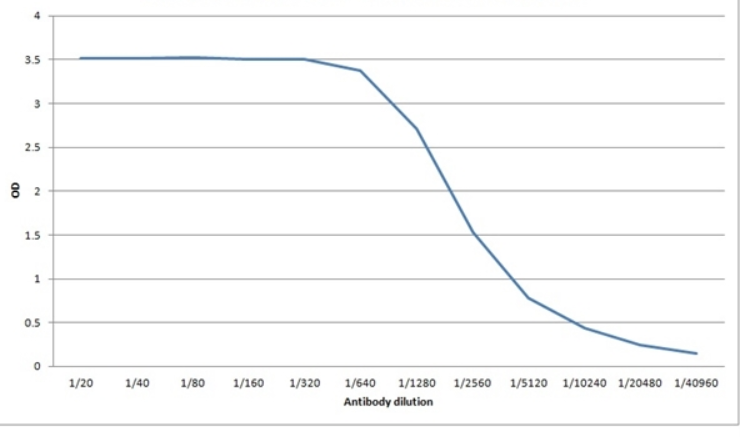CNY 3,487.00
4周
Human IgG4 (pFC) mouse monoclonal antibody, clone HP6023 (also known as HO6023), HRP, Purified
| Applications | ELISA: 1/4000-1/8000 (See also Ref.2-9). Applications Reported in Literature: Flow Cytometry (Ref.15,18,19). Immunohistochemistry on Frozen Sections (Ref.10). Immunohistochemistry on Paraffin Sections (Ref.5,7,10,11). Immunocytochemistry (Ref.12). Immunoblotting (Ref.3,13-16). Microarray (Ref.17). Multiplex (Ref.2,20-22). Purification (Ref.15). |
| Reactivities | Human |
| Conjugation | HRP |


 United States
United States
 Germany
Germany
 Japan
Japan
 United Kingdom
United Kingdom
 China
China

![Western Blot of Mouse IgG Antibody Peroxidase Conjugated detecting mouse IgG. Mouse IgG (1.0 mg) was separated on a 4-20% gradient gel and then transferred to Whatman Protran BA 85 nitrocellulose (0.45 µm pore size) and blocked with 5% BLOTTO (p/n [B501-0500]) o/n at 4°C. The membrane was then probed with a 1/2,500 dilution of HRP Rabbit anti-Mouse IgG [H&L] R1253HRP for 45 min at RT. FemtoMax Super Sensitive Chemiluminescent HRP Substrate Was added and the image was captured using a BioSpectrum Imaging System with a BioChemi 500 -28C cooled 4.0 Megapixel CCD Camera from UVP (www.uvp.com, Upland, CA). Binning: 5X5. Exposure time: 2 min. Aperture open. No emission or excitation filters used.](https://cdn.origene.com/assets/images/antibody/secondary-antibody/115/0223552.jpeg?browse)


